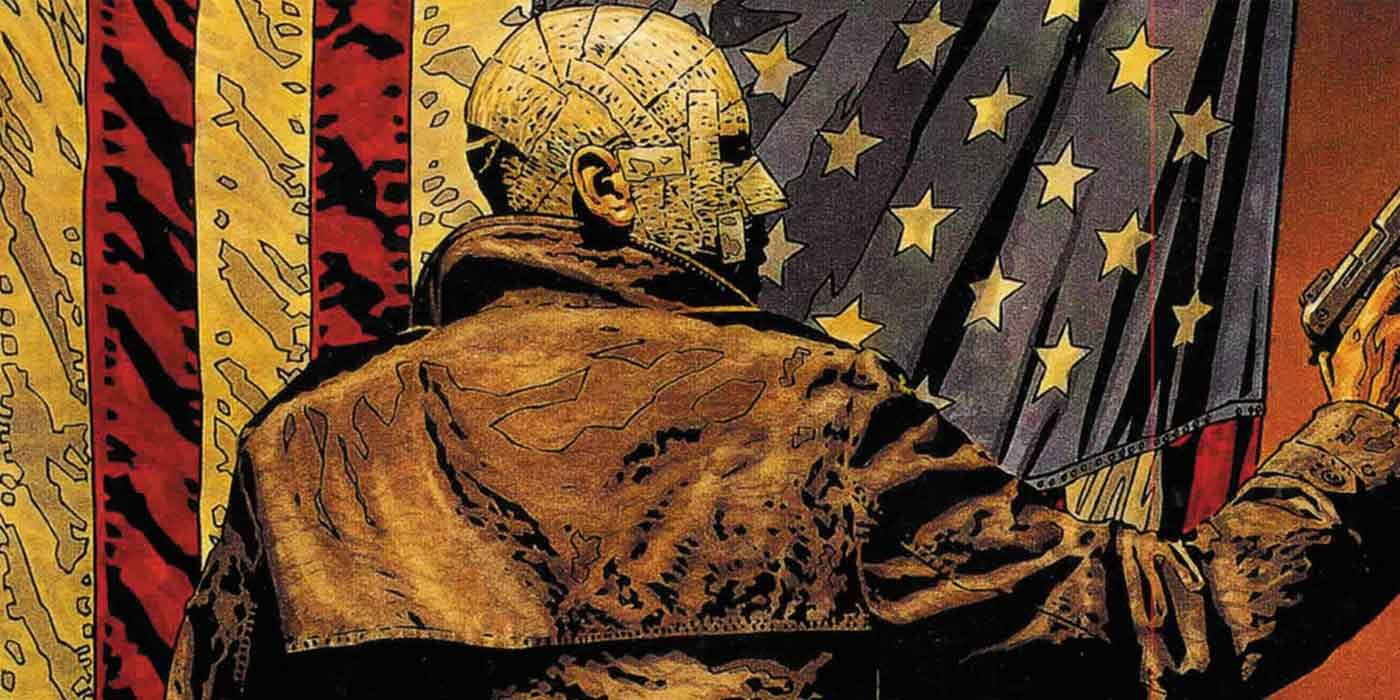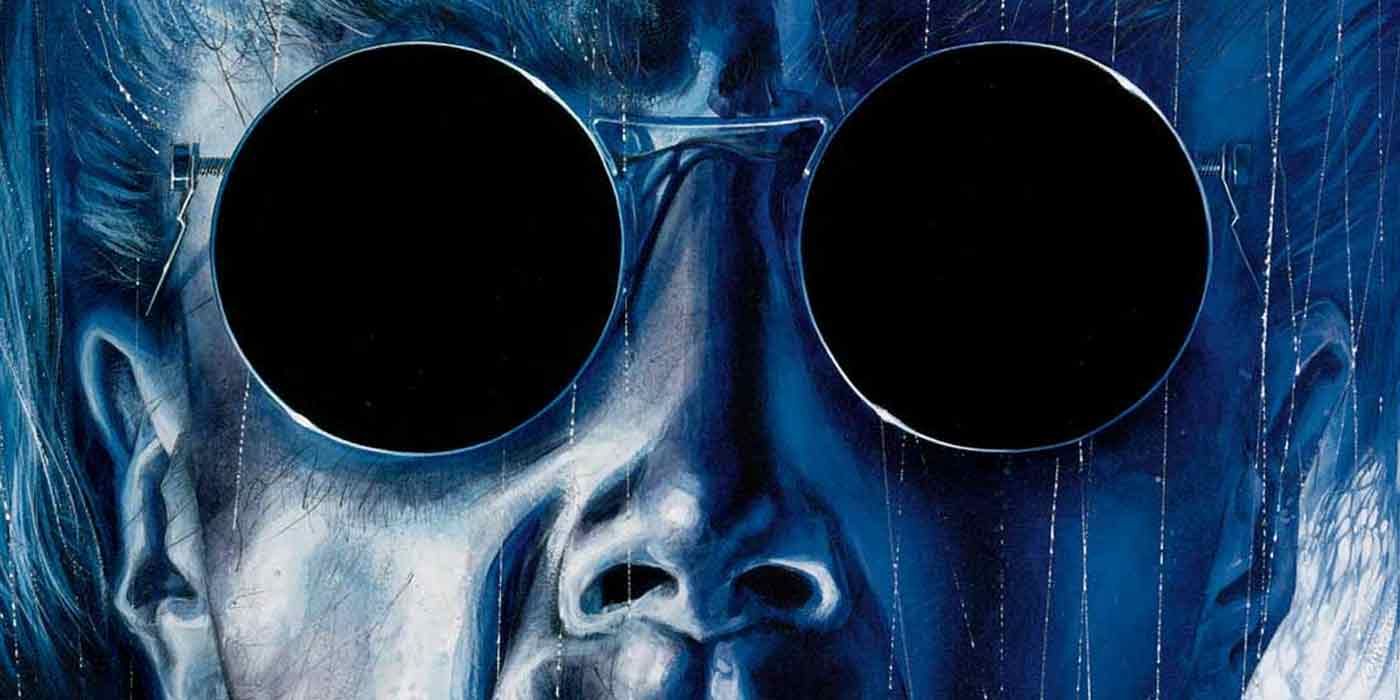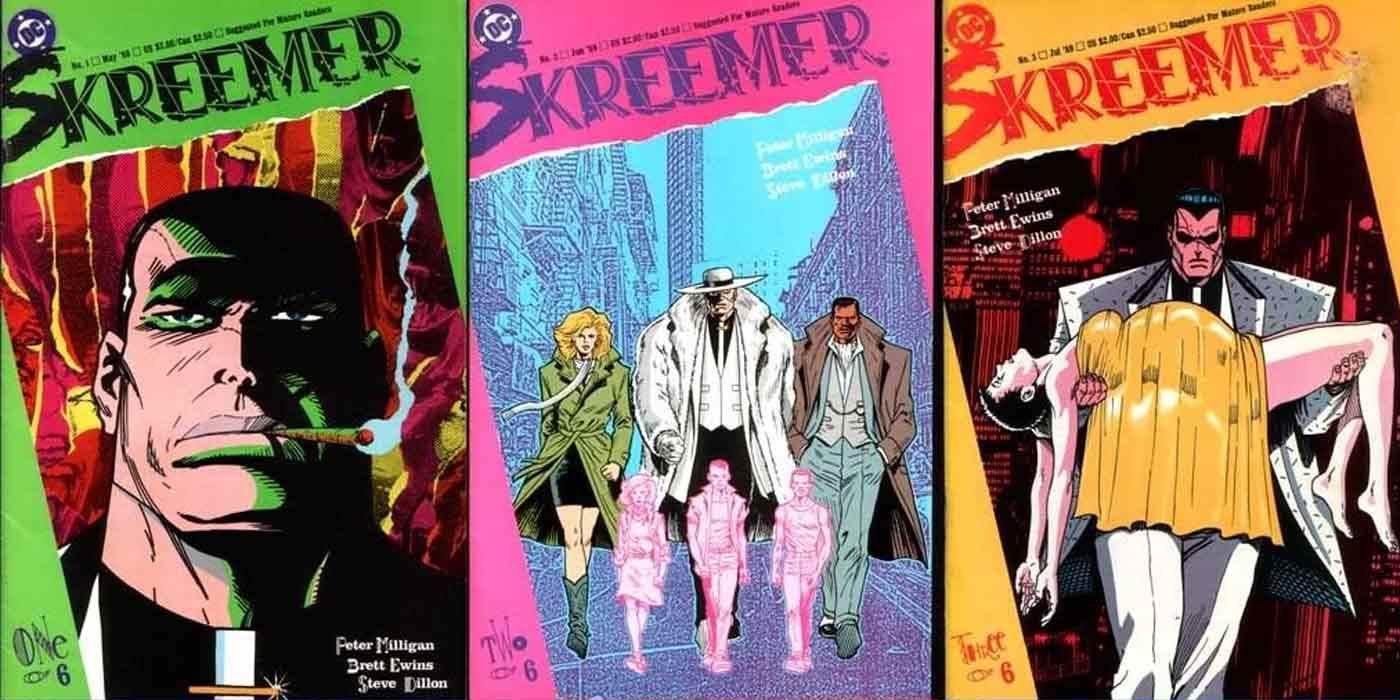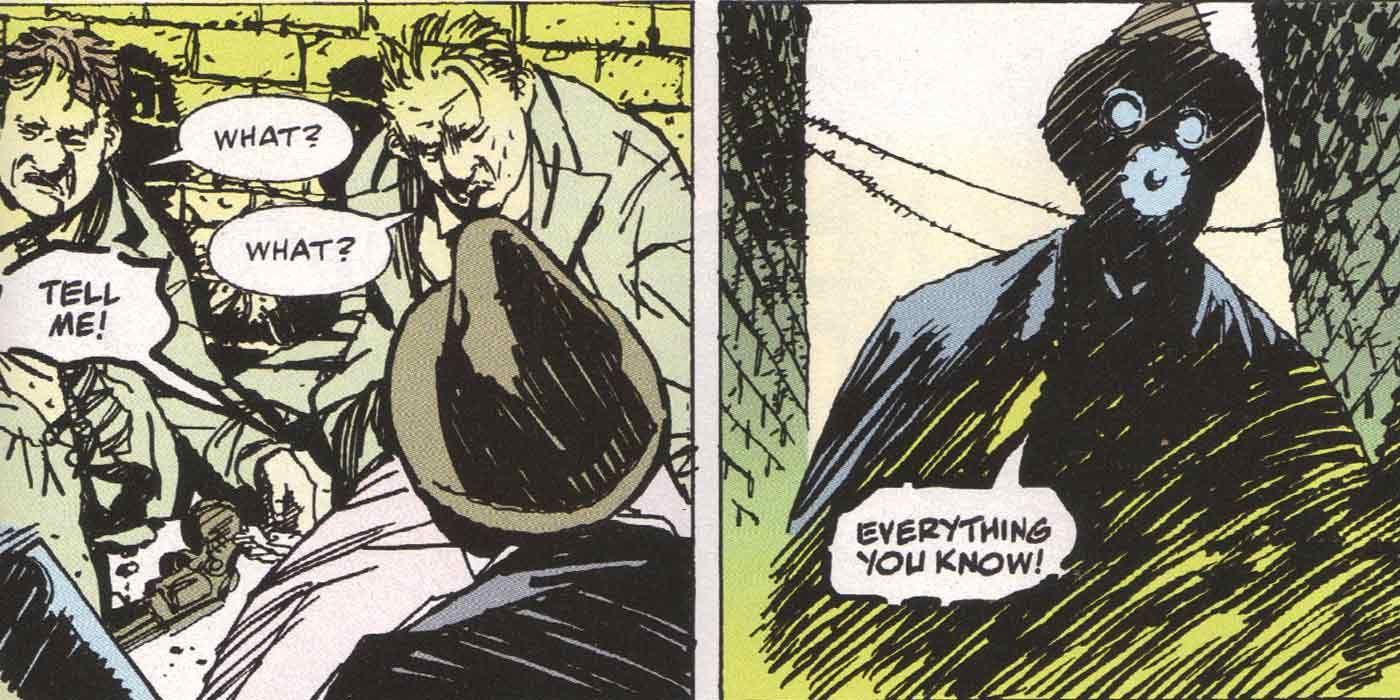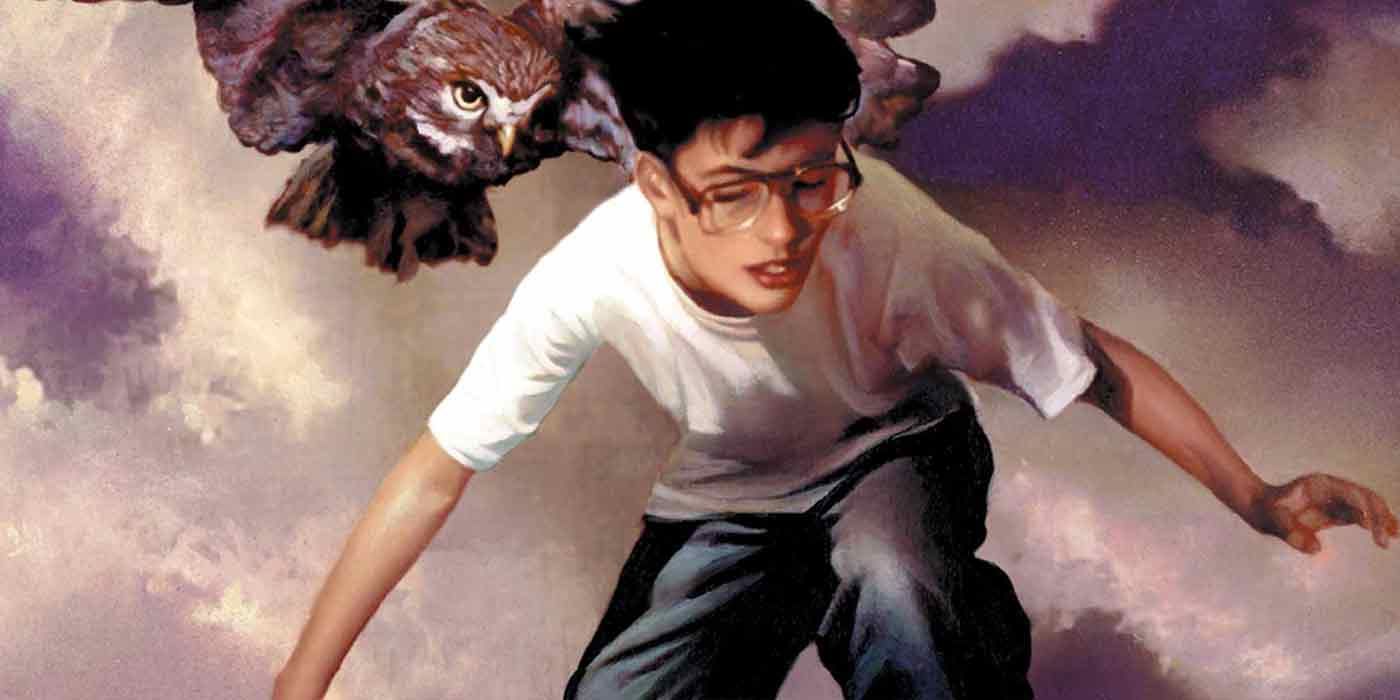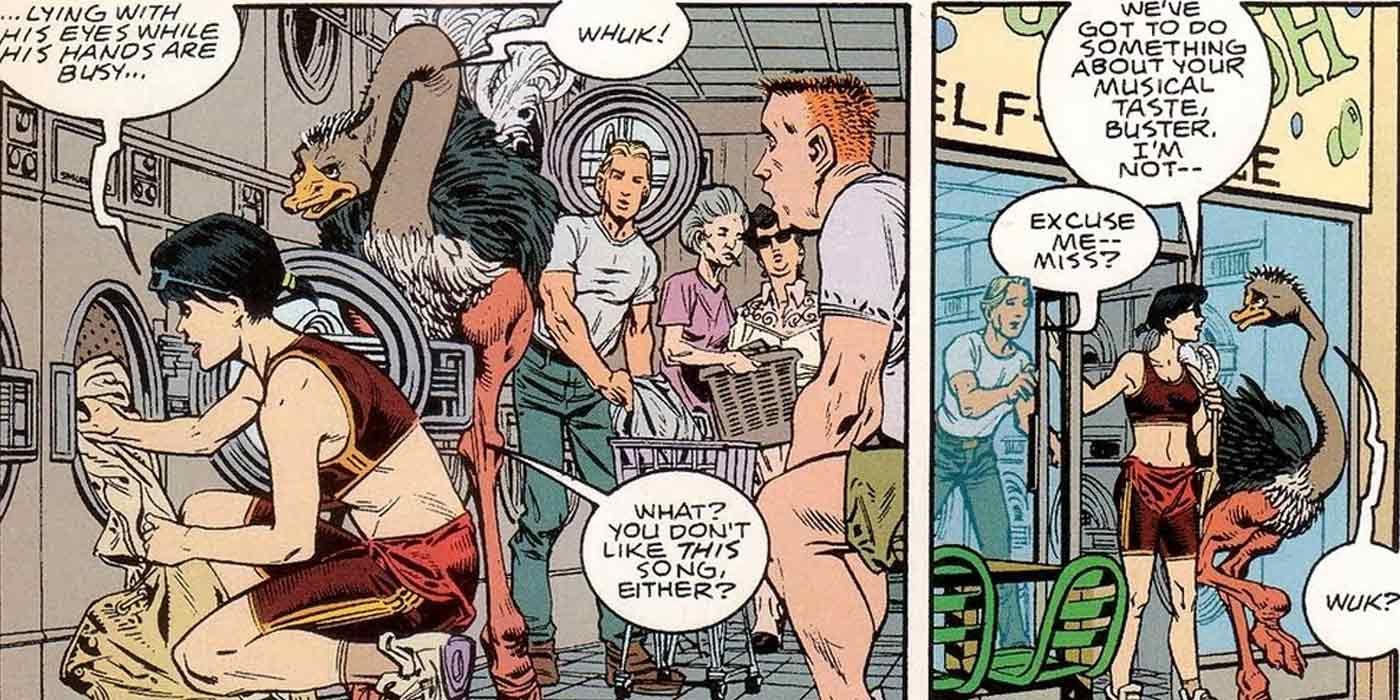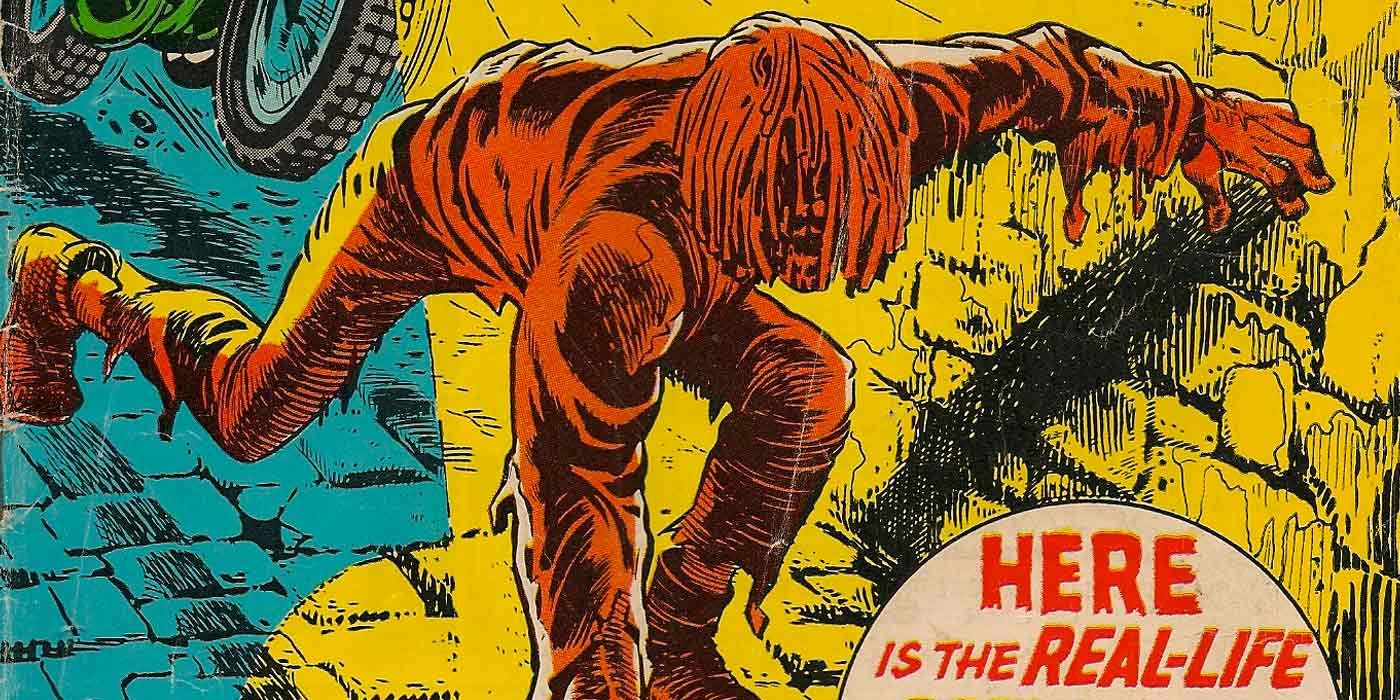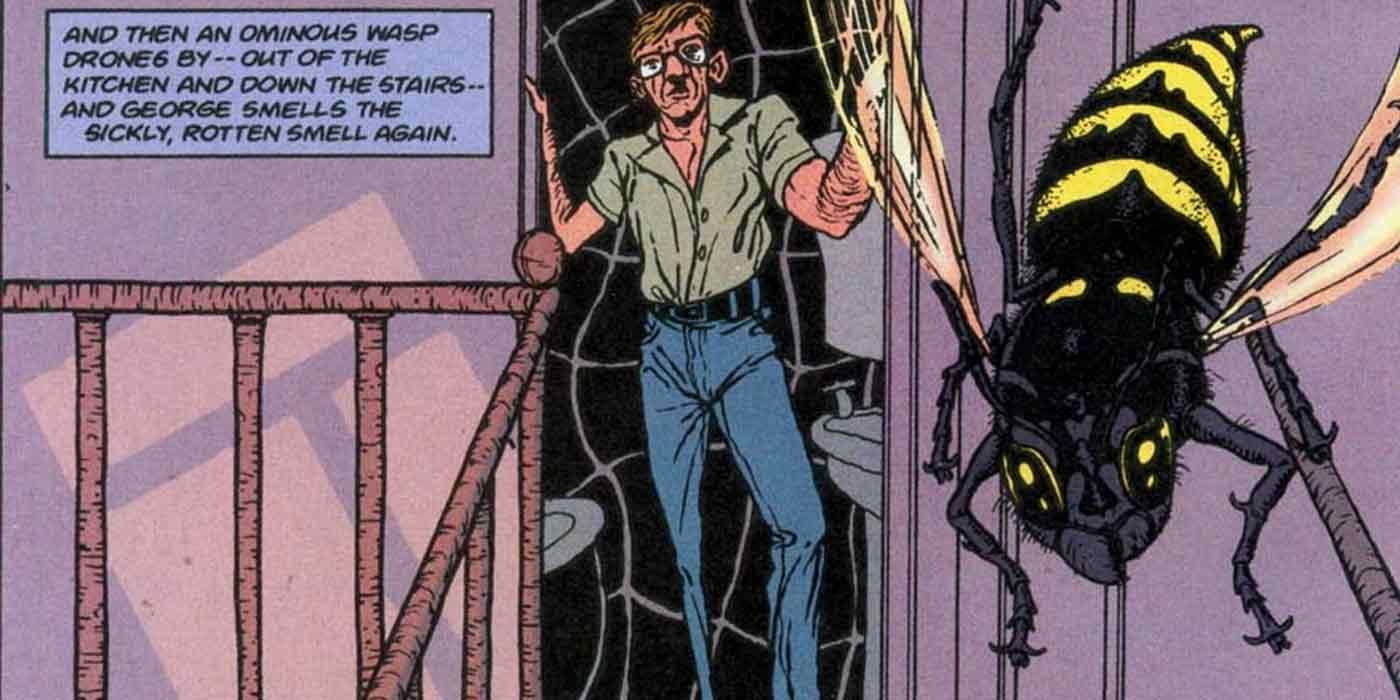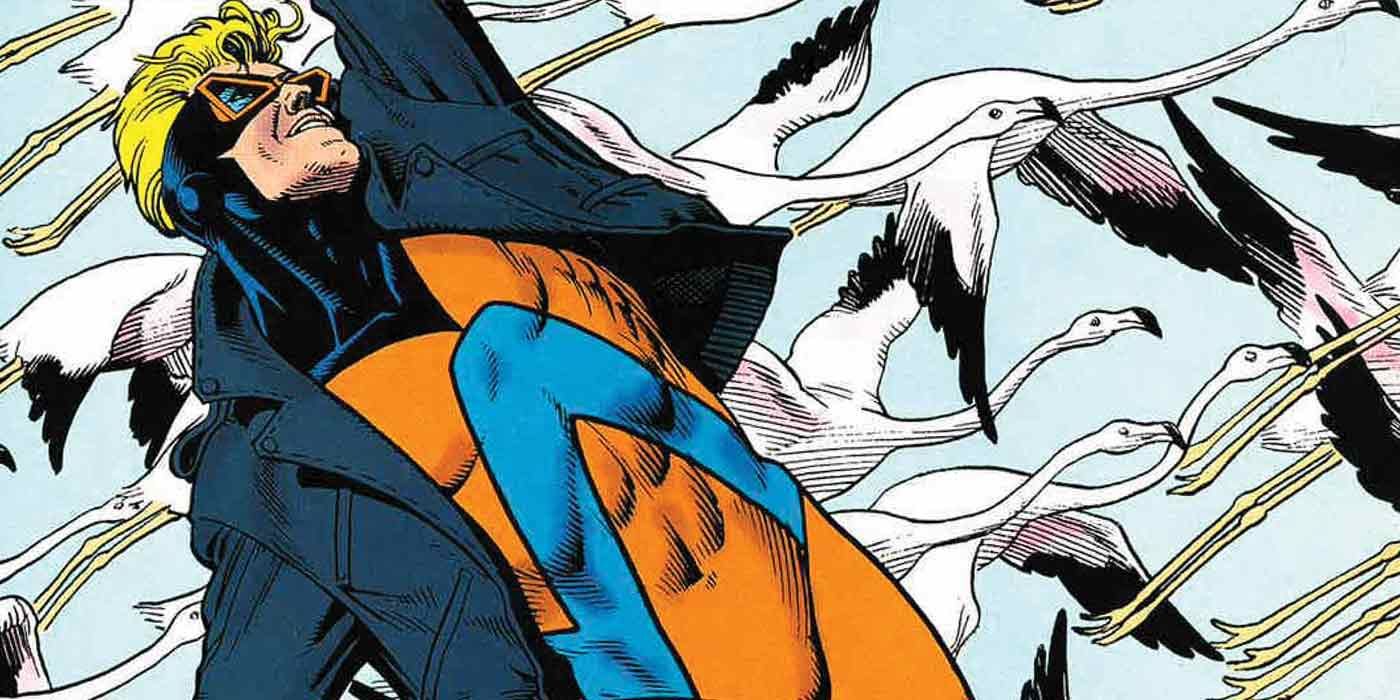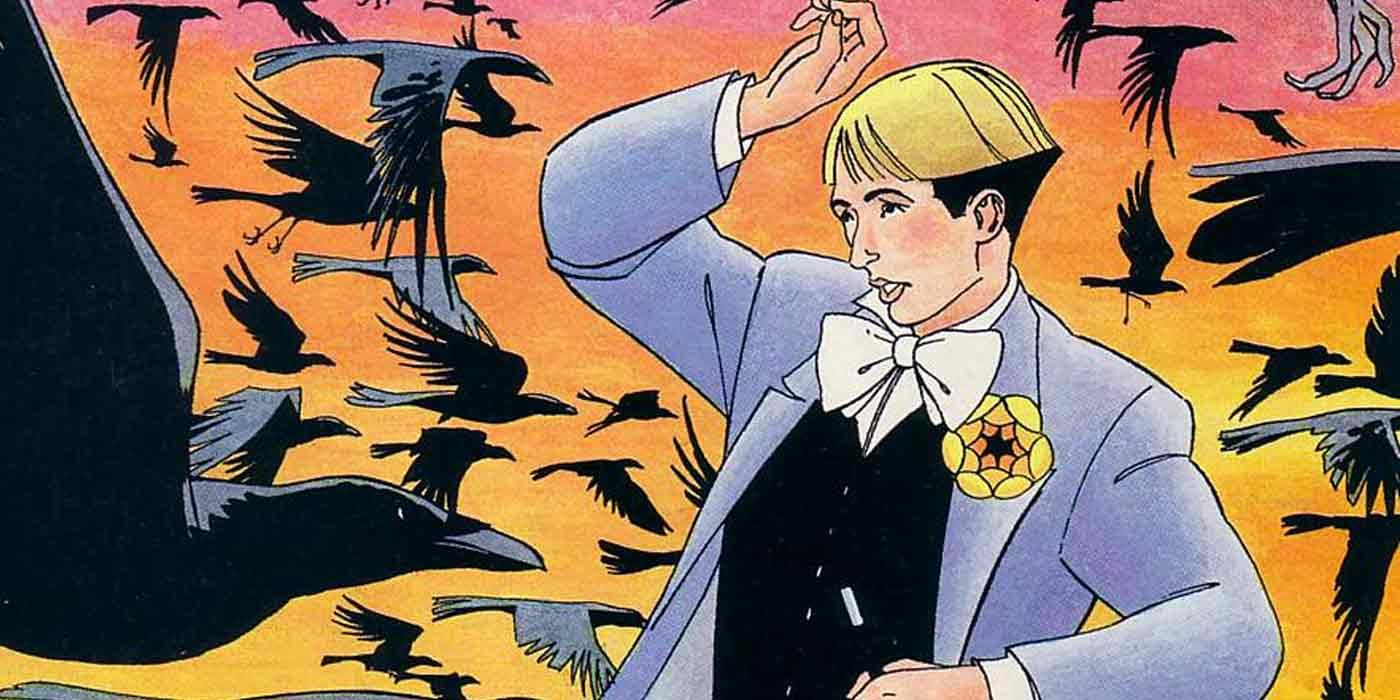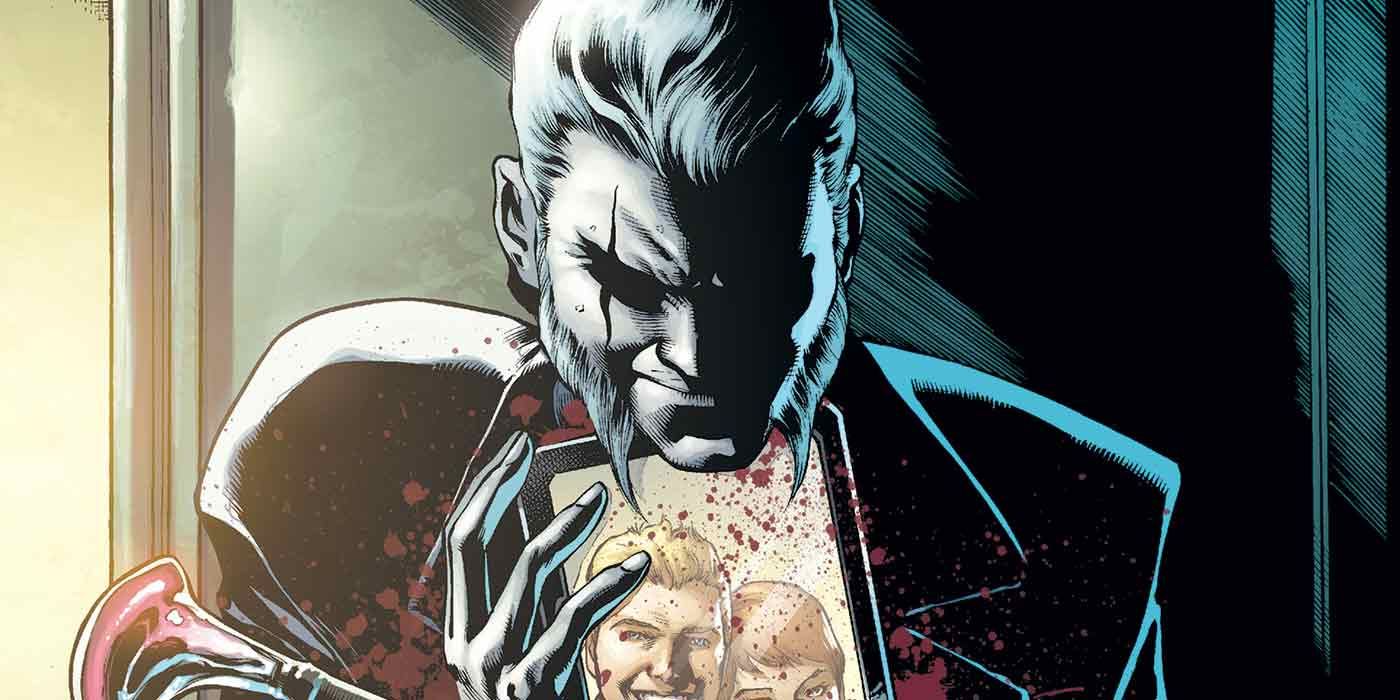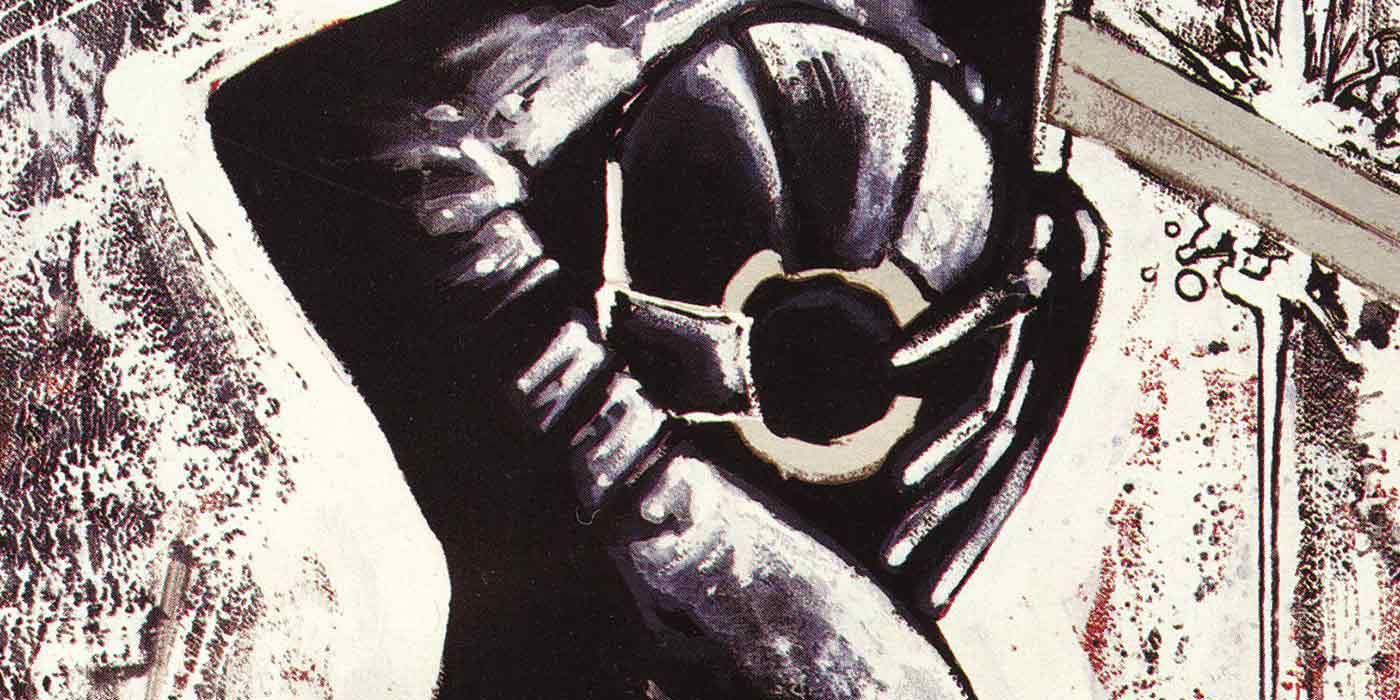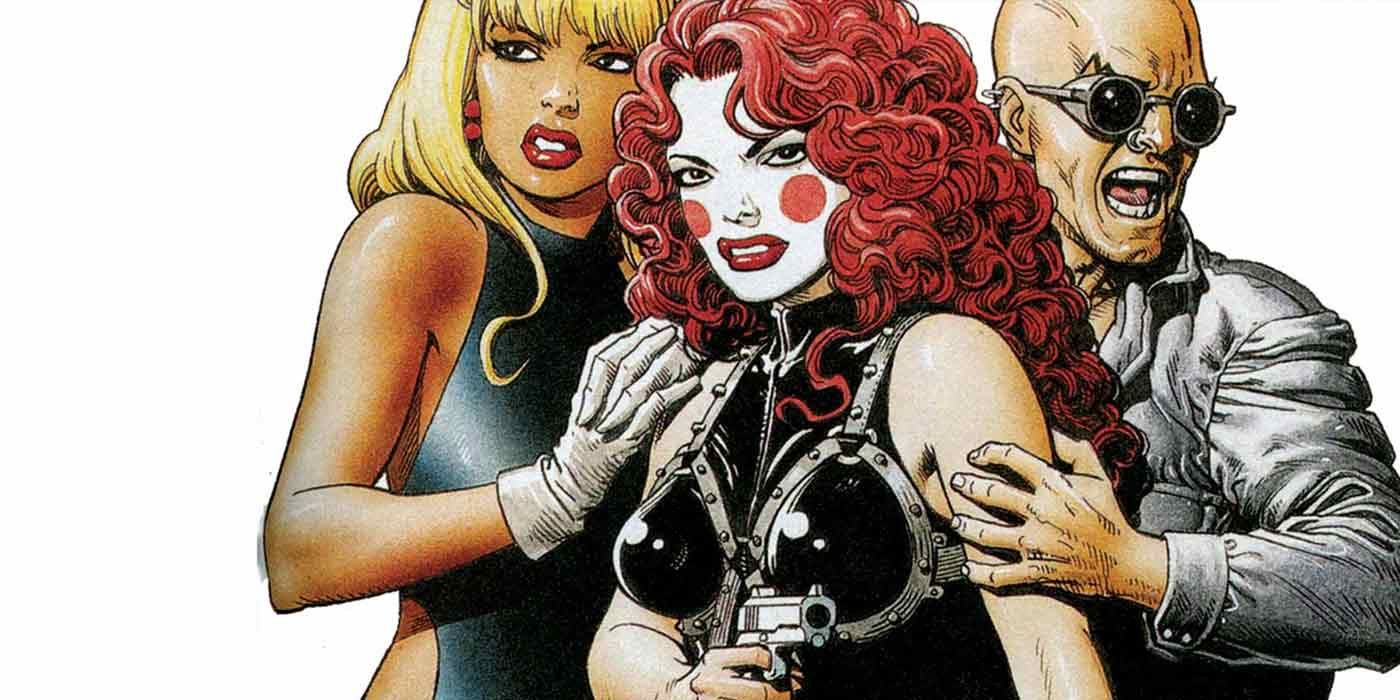Gerard Way and Nick Derington's new “Doom Patrol” series has already been making waves throughout fandom. The same is true of “Shade, The Changing Girl,” by Marley Zarcone and Cecil Castellucci, which has also been mystifying readers with madness. With these releases now in the ether and a few more still in the pipeline, the M.O. of DC's brash new upstart imprint, Young Animal, has become clear: create fresh, new takes on characters that lean heavily on DC’s Vertigo classics.
RELATED: WildStorm Rising: 15 Things We Want to See in DC’s Revival
Obviously, we here at CBR like that idea a lot, and the results so far have been pretty darn great! So with that in mind, we put together a wish list of similarly-stellar Vertigo titles that could do with a fresh lick of 21st Century paint and enjoy a second lease on life beneath the trippy banner of Gerard Way’s new imprint.
RELATED: 11 Reasons Marvel’s New Universe Failed
13 Kid Eternity
“Cave Carson Has A Cybernetic Eye,” one of the freakiest upcoming Young Animal titles, is an update of a mostly-forgotten DC hero who debuted all the way back in the sixties. The radical retelling is in keeping with similar Vertigo do-overs, like “Kid Eternity.” Created in 1942 by Otto Binder and Sheldon Moldoff for the now defunct publisher Quality Comics, this hero had an origin inescapably rooted in the era. In his inaugural issue, "The Kid" was killed in a U-Boat attack, 75 years before he was supposed to die; thus, he was subsequently resurrected and empowered by cosmic beings. That didn’t stop Grant Morrison and Duncan Fegredo from dragging him into the present day, though.
As was de rigueur at the time, "Kid Eternity" was a radical reinvention at Vertigo. In the reboot, it turns out this whole “75 years too early” thing was a ruse, and the supposedly benevolent cosmic forces behind his resurrection were, in fact, demons. And what about The Kid's ability to summon any figure from history, real or fictional, to help him in his fight for justice? Yeah, those were demons, too. It’s a great concept, albeit one that Morrison and Fegredo only followed for a three-issue miniseries. Even if you jettison the darker angle, “Kid Eternity” is a character that has legs beyond what has been shown thus far, and would be a great fit for the new Young Animal.
12 Skreemer
Peter Milligan was the other big name in '90s Vertigo. A British transplant and “2000 A.D.” veteran (alongside Morrison), the stuff he was writing during the period was even more straight-down-the-line psychedelic. His and Chris Bachalo's version of the Steve Ditko-created “Shade, the Changing Man,” has already been latched onto by Young Animal, but there are even more obscure books in his back catalog that could do with a new take. “Skreemer” is a crime story with an impressive pedigree behind it -- Milligan writing, art by Brett Ewins and regular Garth Ennis collaborator Steve Dillon -- and would make an exceptional addition to YA's library.
The premise is ripe for rebooting as well. So far, Young Animal hasn’t got much in the way of crime stories, a genre that Vertigo always had great strength in producing. Keeping it gonzo, “Skreemer” is a “Once Upon A Time In America”-style drama about a generational crime family... with the family in question all being giants... who operate out of a post-apocalyptic New York City. Apparently, James Joyce's “Finnegan’s Wake” was as much an influence on the original series as “The Godfather." Who wouldn’t want to see, say, Gerard Way’s “Umbrella Academy” collaborator Gabriel Bá draw that?
11 Sandman Mystery Theatre
There are a handful of classic Vertigo books that should remain sacrosanct. “The Sandman,” for example, doesn’t need a Young Animal spin. That series was the product of a singular artistic vision (albeit produced collaboratively), and it’s unlikely anybody could improve on it, much as they may try. The old-school DC character who inspired the name of Neil Gaiman’s magnum opus, meanwhile, is one with bags of untapped potential. The knock-out gas-wielding vigilante did return in a pulpy noir-indebted series between 1993 and 1999.
The problem was that “Sandman Mystery Theatre” was vastly overshadowed by Vertigo’s other “Sandman” series. It’s about time the original got his time in the sun (or the expressionistic shadows), and this could be another chance at a crime book that takes a walk on the wilder side of comics, which Gerard Way clearly enjoys. Future “B.P.R.D” artist Guy Davis got one of his early big breaks on the old series, so if Young Animal was bold enough to take this series on, it would do well to hire a similarly-gifted, moody penciller.
10 Books of Magic
“Books of Magic” was another Neil Gaiman-adjacent series, but one which could easily make a comeback without stepping on “The Sandman”’s toes. The original four-issue mini by Gaiman and John Bolton was more strongly tied into his realm of Dream; but as it continued into an ongoing, it became woven into the wider tapestry of the occult side of the DC Universe. In particular, it followed characters like John Constantine and The Phantom Stranger as they helped coach young Timothy Hunter to reach his potential as the most powerful wizard in the realm.
If that sounds familiar and the image above seems strikingly similar to another boy wizard, just know that “Books of Magic” began when “Harry Potter” was but a twinkle in J.K. Rowling’s eye. Perhaps a makeover for young Tim would be on the cards in his Young Animal reboot, which again would expand the line into an area it’s mostly neglected so far; i.e., the realms of magic, a place Grant Morrison was very at home in. It could possibly even pick up where the original series left off, with plans to follow Timothy Hunter into being an adult wizard.
9 Nevada
Steve Gerber remains best known as the man who, alongside artist Val Mayerik, co- created “Howard the Duck” (or possibly as the guy who had an ongoing debate as to who owned him), but his warped satirical mind was often allowed to wander freely outside the confines of Marvel Comics. The best example is “Nevada,” a 1998 Vertigo limited series with art from Phil Winslade, Steve Leialoha and Dick Giordano, about a Las Vegas showgirl and her pet ostrich who had to contend with a suddenly shifting reality.
The short series took in crime, intrigue, mystery and a mobster with a lava lamp for a head. For a guy who co-created “Howard the Duck,” Gerber was always attempting to out-odd himself. The surreal comedy of the Young Animal “Doom Patrol” would seem to make “Nevada” a perfect fit, with the added bonus that perhaps less people are familiar with the original series and thus its creative team would be less burdened with expectation. Also, comic books really need more ostrich protagonists.
8 Brother Power, The Geek
Marvel was quick to jump onto the burgeoning hippie culture in the '60s, with weirdo cosmic titles like “Silver Surfer” and “Doctor Strange.” In comparison, their “Distinguished Competition” (DC Comics) was semi-accurately characterized as the stuffy, conservative establishment. DC attempted to remedy their image with “Brother Power the Geek,” a story about a storefront mannequin who comes to life following his adoption by hippies (who dress him in their clothes) and a fortuitous lightning bolt. Where he went from there was quite the trip indeed.
Across his brief initial run, the character was kidnapped by a “Psychedelic Circus,” ran for congress and was shot into space by Ronald Reagan. Hated by the old guard of DC editorial at the time, Brother Power didn’t appear again until an issue of “Swamp Thing,” where he crashed back down to Earth. The kitsch factor is high in “Brother Power” and a self-conscious freaky throwback to 1960's fashions in a new reboot would be a visual treat. Get Michael Allred on board and you would have a bonafide pop art hit on your hands.
7 Tainted
Names like Gaiman, Milligan and Fegredo are synonymous with the salad days of Vertigo Comics, but there’s one equally important creator who is often lost in the shuffle. Accompanied by a battery of talented artists, Jamie Delgado wrote the lion’s share of “Hellblazer's” first forty issues, which cemented the core traits of the John Constantine we all know and love. His work after is lesser known, but equally as inventive and radical. “Tainted” was a one-shot by Delano and Al Davison that combined Kafka with BDSM. If that's not a good enough one-line pitch, then you are beyond our help.
The original “Tainted” is a tightly-plotted one-and-done crime piece with surrealist elements involving the disquieting goings on in an English boarding house run by a man with a mysterious past. It's a taut character piece that nonetheless could benefit from being given some room to breathe, and get even weirder as a result. Expand the setting and tease out said mystery for longer, and the Young Animal “Tainted” could well be the comic book equivalent of “Twin Peaks,” with slightly more gimp suits.
6 Animal Man
Buddy Baker returned to the mainstream DC Universe as part of the New 52, with a horror-tinged take by writer Jeff Lemire and artist Travel Foreman, but Vertigo is the place where he's had his best adventures. Grant Morrison, Jamie Delano, Chas Truog and Doug Hazlewood put the superhero Dr. Doolittle through the ringer, making him an animal rights activist who was aware of the fact he was a fictional character in a comic book. He was also made an “avatar” for the natural world in the same vein as Swamp Thing.
Animal Man’s ability to talk to animals falls by the wayside in most depictions of the character. He’s mostly a blank slate onto which the creators can project basically whatever strange idea they want; a rare treat in your mainstream superhero books. That means the sky’s the limit for a Young Animal take. Gerard Way could make him a member of the “The Umbrella Academy” if he really wanted to, but the best bet may be to hand him over to an up-and-coming creative team to do experimental indie books, and let them go hog wild. Or maybe quorn wild.
5 Sebastian O
Steampunk before steampunk was even a thing, “Sebastian O” was Grant Morrison and Steve Yeowell’s alternate history romp starring an assassin loosely based on Oscar Wilde. The titular Sebastian was eventually imprisoned, not for all the murders he committed across Victorian England, but because he was framed for publishing transgressive literature. His tale of revenge is a brutal and bloody one, in stark contrast to the beautiful clean line work Yeowell renders all of it in.
Another Vertigo title written as a complete story with a beginning, middle and end, a Young Animal version aiming to for a longer run could well work. “Sebastian O” could well be the line’s “Sherlock," but one which acknowledges that the main character, while brilliant, is also a bloodthirsty psychopath. Perhaps it could be “Sherlock” by way of “Hannibal,” with the steampunk elements in tact. Sounds like a surefire hit to us!
4 Mister E
Another retro DC character brought back for “Books of Magic,” Mister E was a blind magician who could nonetheless “see” evil thanks to his supernatural ability. He fought mythological creatures like werewolves, ghosts and even leprechauns until Neil Gaiman turned him into a mentally disturbed semi-villain who was convinced Timothy Hunter’s aptitude for magic would result in the downfall of humanity. For the few that remember Mister E, it will be either as a bad guy, or for his fleeting appearances in the New 52 “Constantine” series.
And that's is a shame, since -- as with other characters on this list -- Mister E feels like a character with a lot of untapped potential. The origins of his powers can be as grim (in “Books of Magic,” his eyesight is lost after his dad gouges out his peepers) or as bright as the creative team wants; and apart from Daredevil, how many blind superheroes do you get? “Mister E” was an often genuinely disturbing, bizarre book that is right in that “American Horror Story” wheelhouse.
3 Unknown Soldier
The likes of crime and magic comics have had a hard time in the modern era, but the war comic might be most neglected of all. Once among the prevailing genres of sequential art, the likes of Sgt. Rock and series such as “Our Army at War” have long since been consigned to the scrap heap. Thankfully, Garth Ennis and Kilian Plunkett had stronger memories than the fickle comics market, bringing back the faceless “Unknown Soldier” in a 1997 miniseries that leaned hard on the espionage thriller angle.
Originally a soldier who suffered facial injuries so horrific that his face was constantly bandaged, he became a master of disguise who undertook covert missions for the C.I.A. The immortal war hero is malleable enough to work in goofy old jingoistic war books and gritty modern thrillers. Given that the topic of warfare remains ever-relevant and characters covered in bandages always look super cool, bringing back the Unknown Soldier is a no-brainer.
2 The Extremist
Another Peter Milligan book, this time with art by Ted McKeever (Brendan McCarthy was on-board at first but “couldn’t be bothered to draw it”), “The Extremist” was something of a dry run for the writer’s later Image series “The Discipline.” Also set in the world of underground S&M clubs, “The Extremist” was the name of an identity inherited by a widow from her dead husband, who had some extracurricular activities she was unaware of.
She goes undercover to find out if his death had something to do with all the "unpleasantness" he was enjoying with other consenting adults. Even today it seems shocking that DC would publish a book so kinky, even if it does get into more standard thriller fare, with a shadowy cabal of assassins using a sex club for a front. If Young Animal wants to make the leap into more self-consciously “adult” comics, however, it might as well go all in with "The Extremist."
1 The Invisibles
Is there a more sacred cow in all of Vertigo’s history than this? Okay, possibly “Transmetropolitan,” but we would recommend nobody mess with Spider Jerusalem (or Warren Ellis, for that matter). Meanwhile, Way and his collaborators have been comfortable tinkering with Grant Morrison’s take on “Doom Patrol,” and the world arguably needs “The Invisibles” now more than ever. The anti-establishment, paranoiac tale about overcoming oppression would have plenty of material to draw on in the age of drones, Donald Trump and widespread NSA surveillance. Its diverse cast of trans women, immortal anarchists and lesbian cults would even be more accepted now than they were 20 years ago.
Pitched as something of a more out-there “Mr. Robot,” it would remind people that Morrison and his innumerable, immensely talented collaborators got there years before “The Matrix” did. Young Animal is already plugging a sizable gap in the comic book market with a built-in audience that is used to being addressed directly, both from Way in his music and thanks to a culture where social media makes creators accessible. So why not address them with the books themselves, and make Lord Fanny the iconic character she always deserved to be?
Which Vertigo books do you think should next be tapped by Young Animal? Let us know in the comments!

